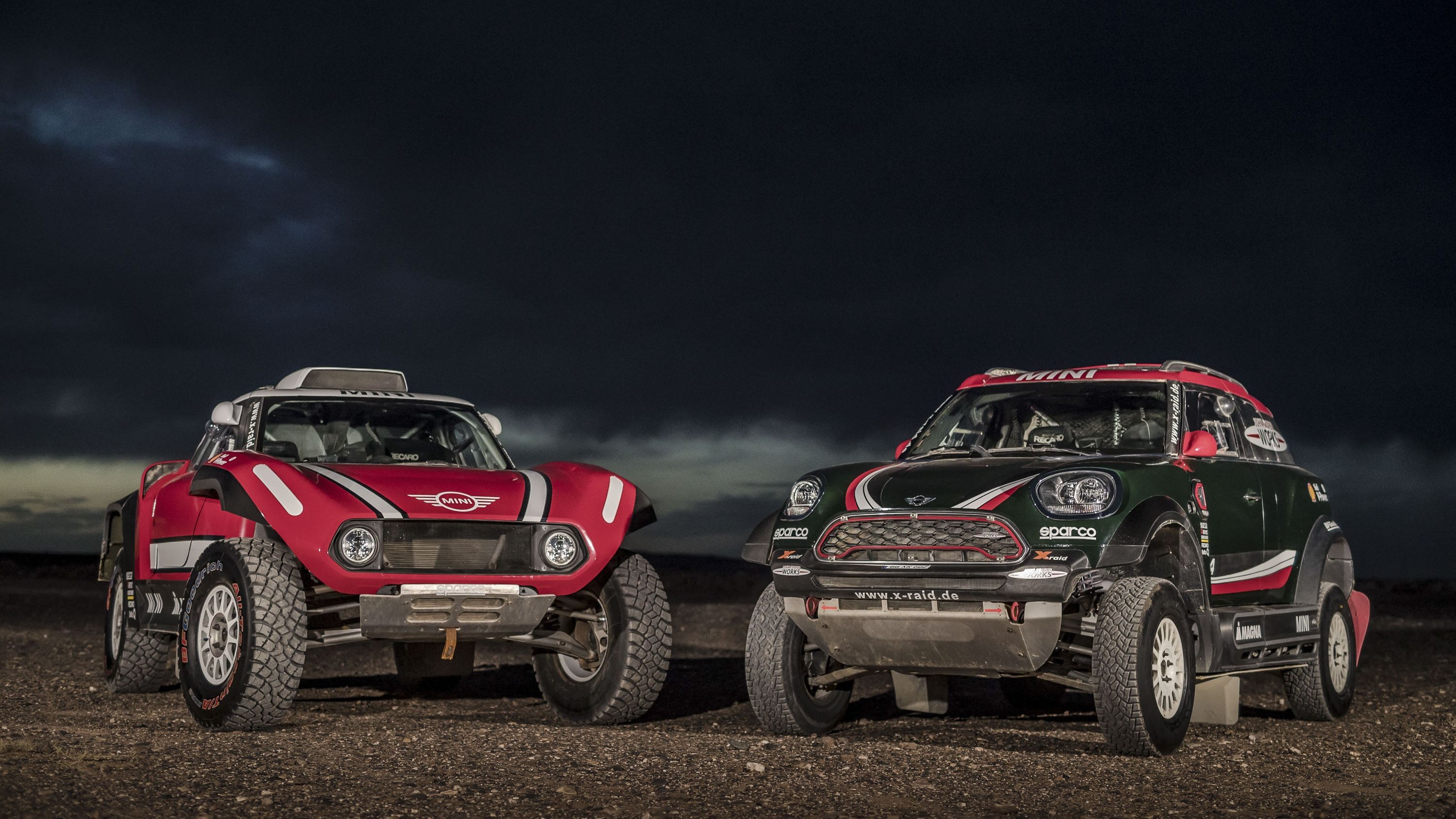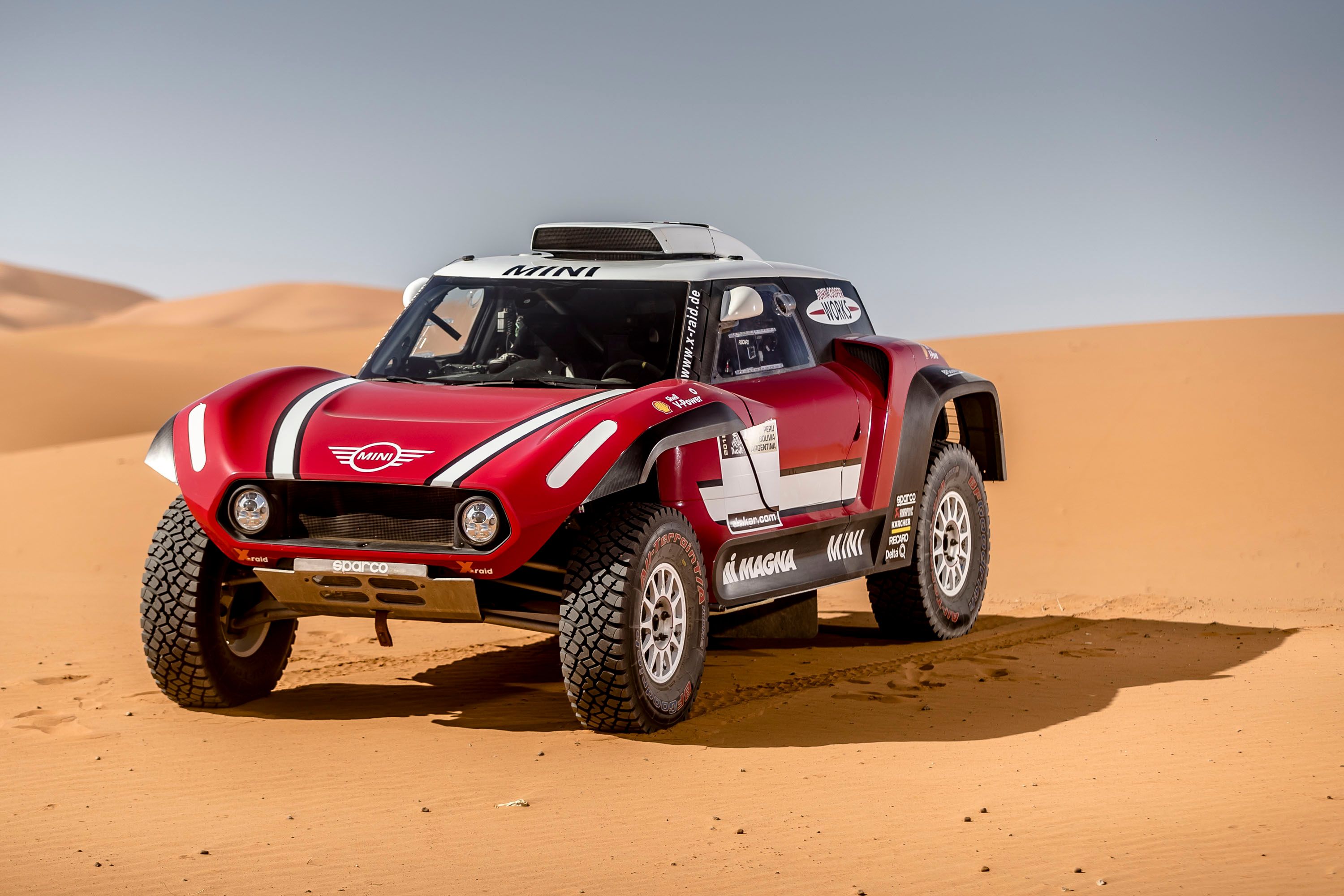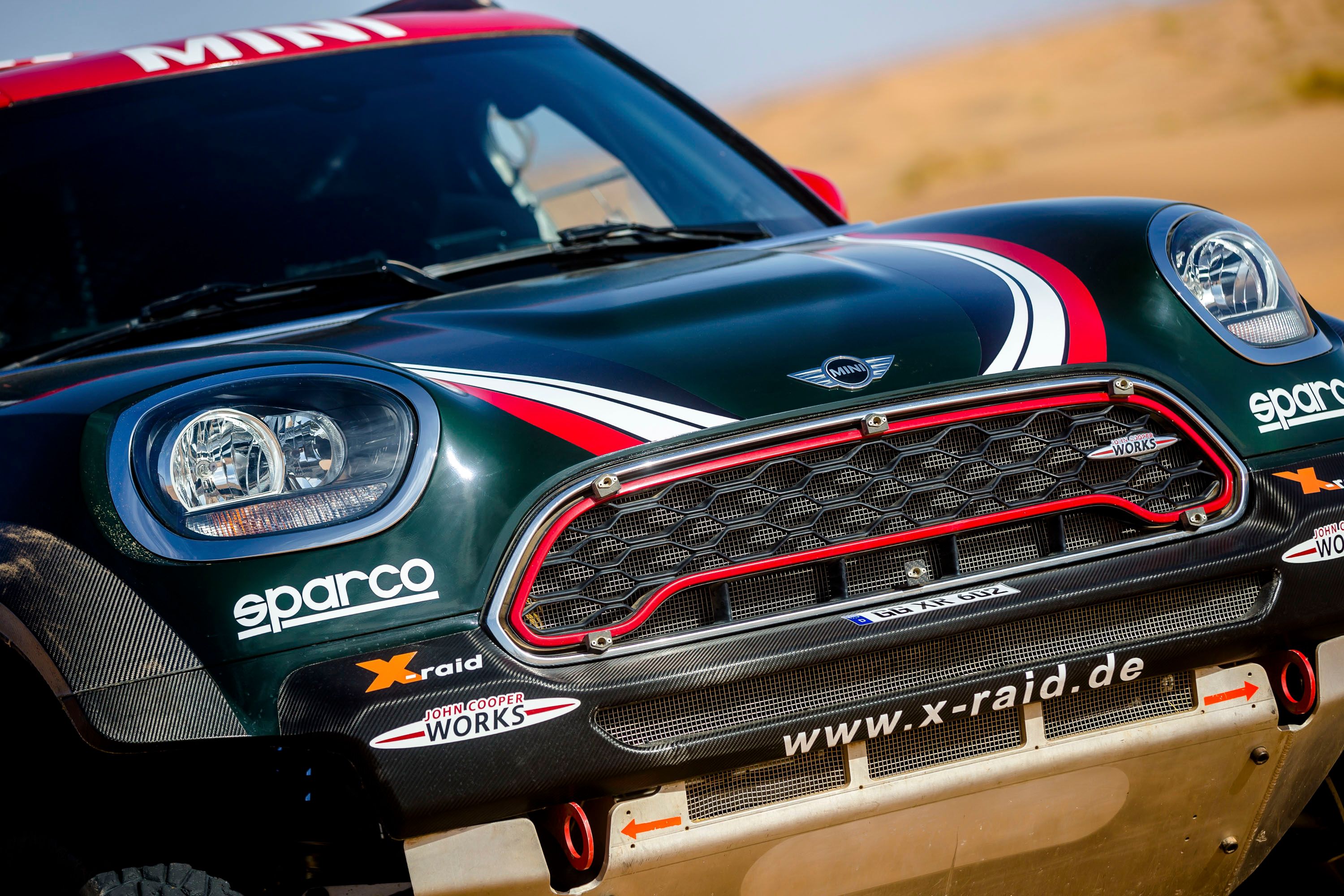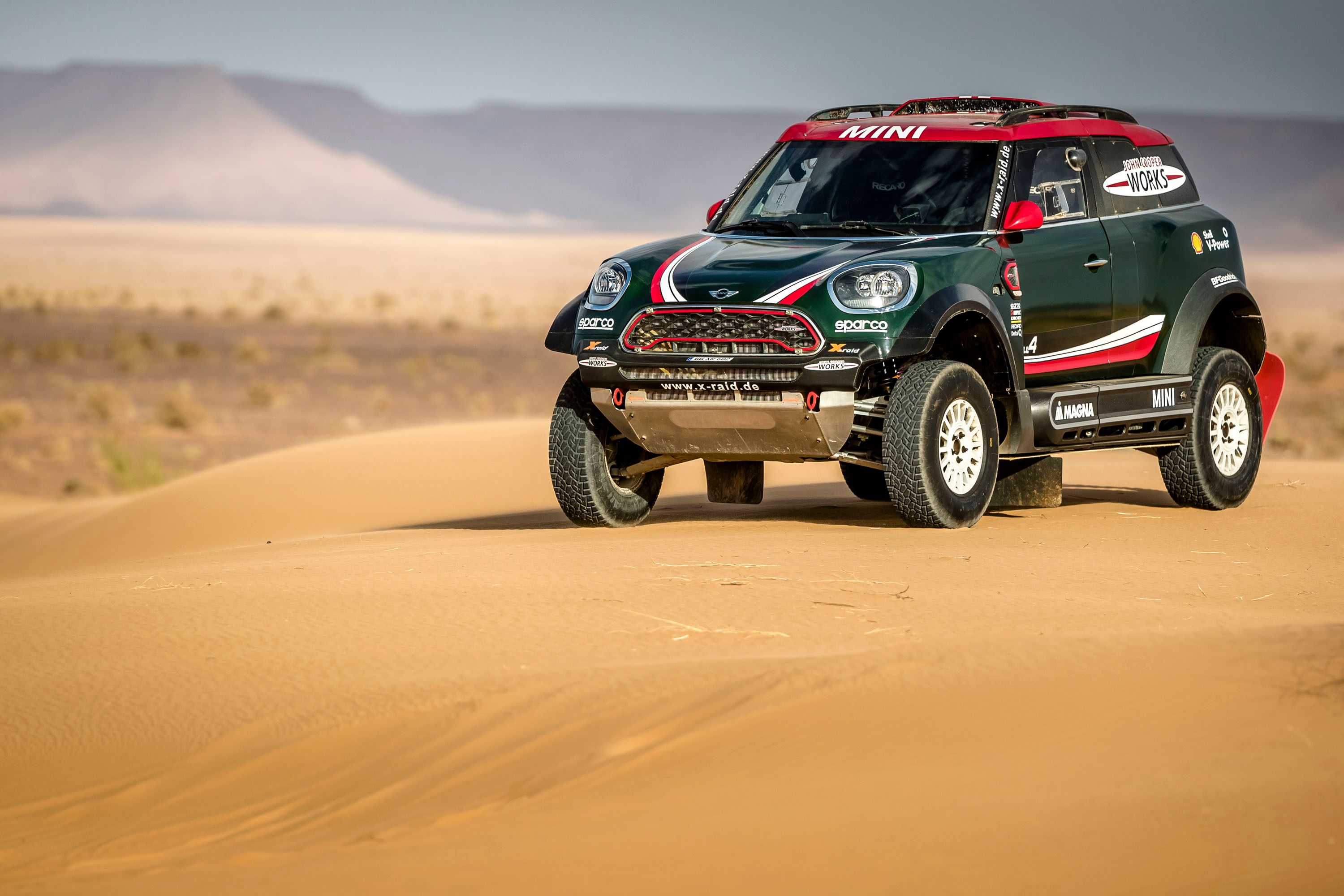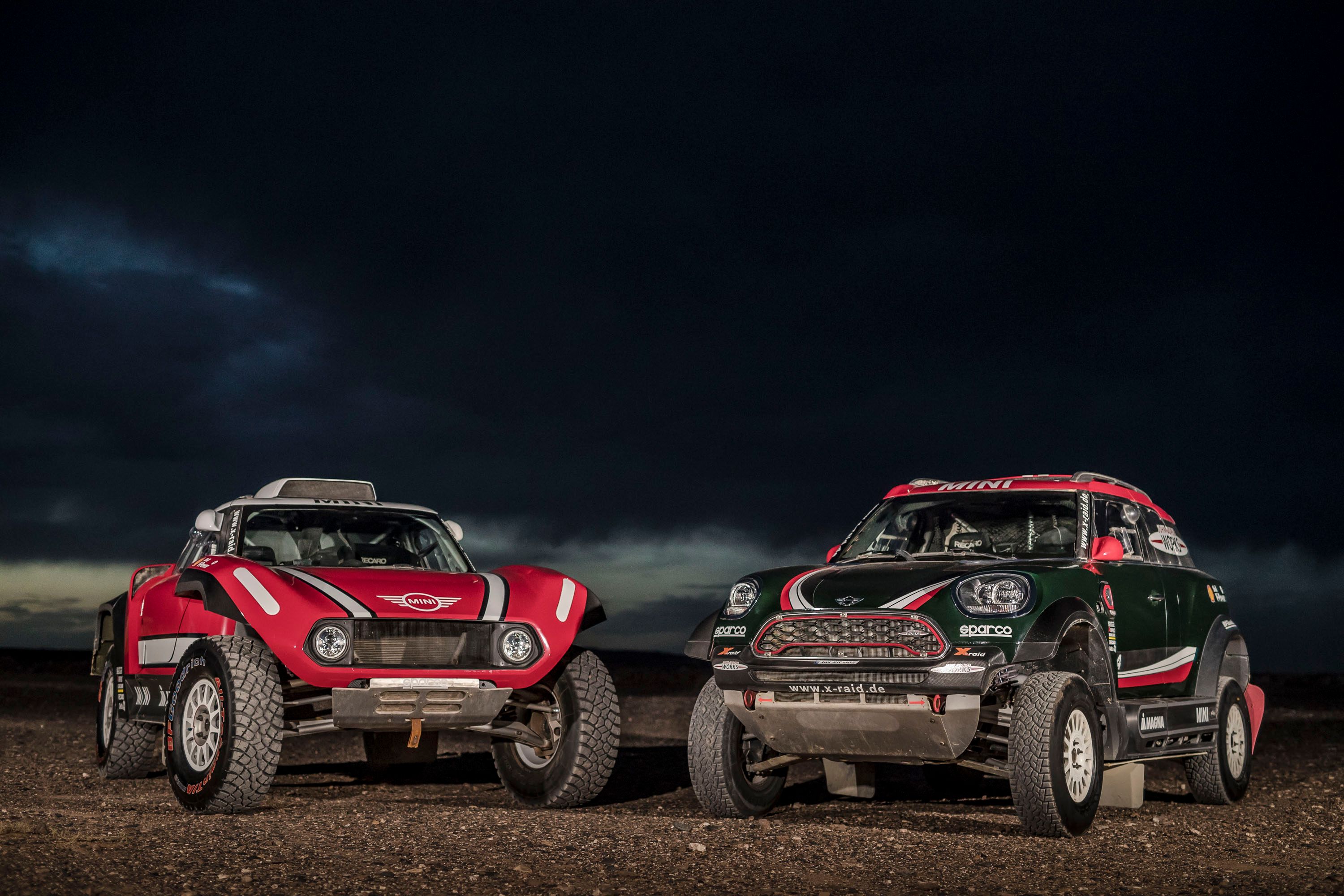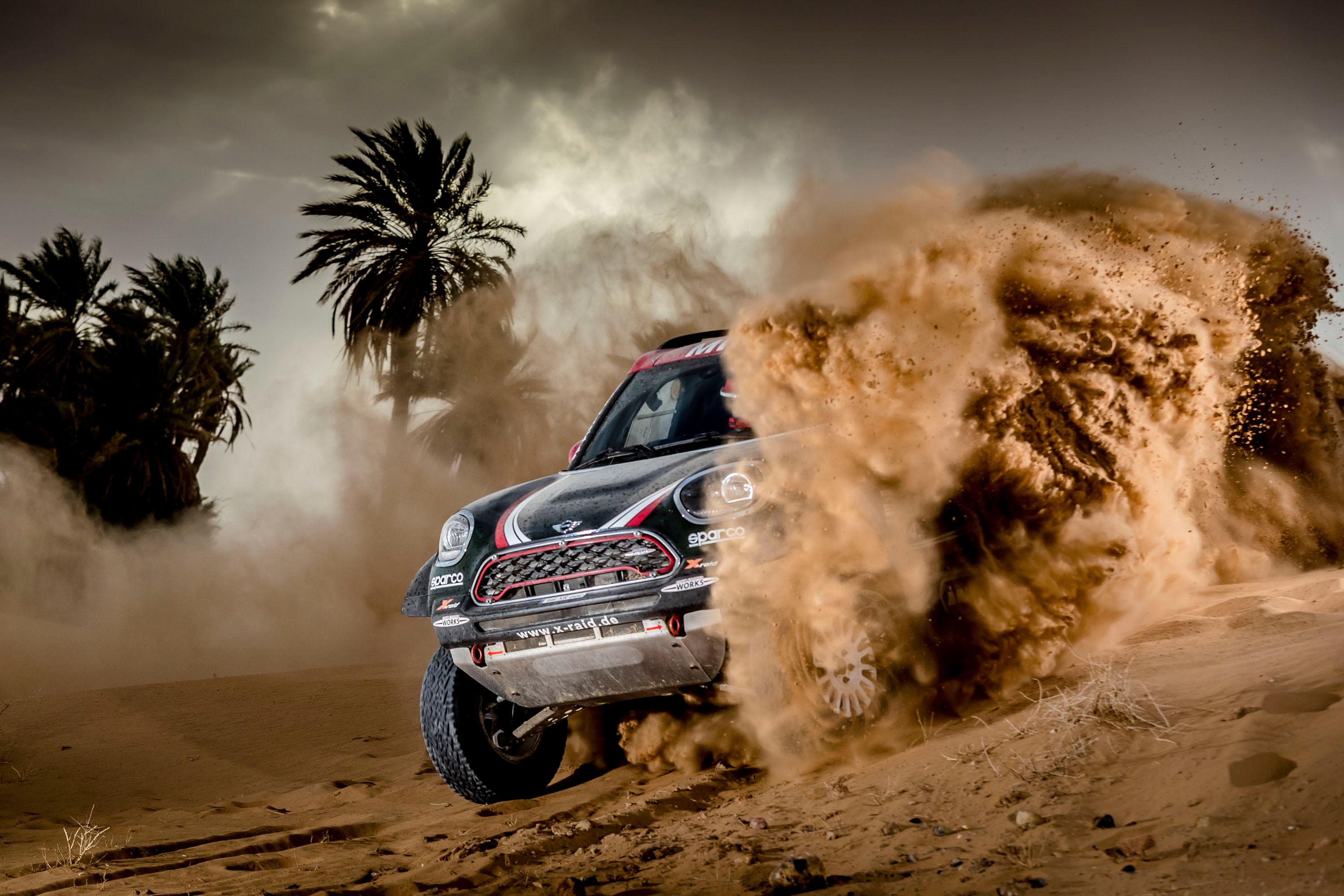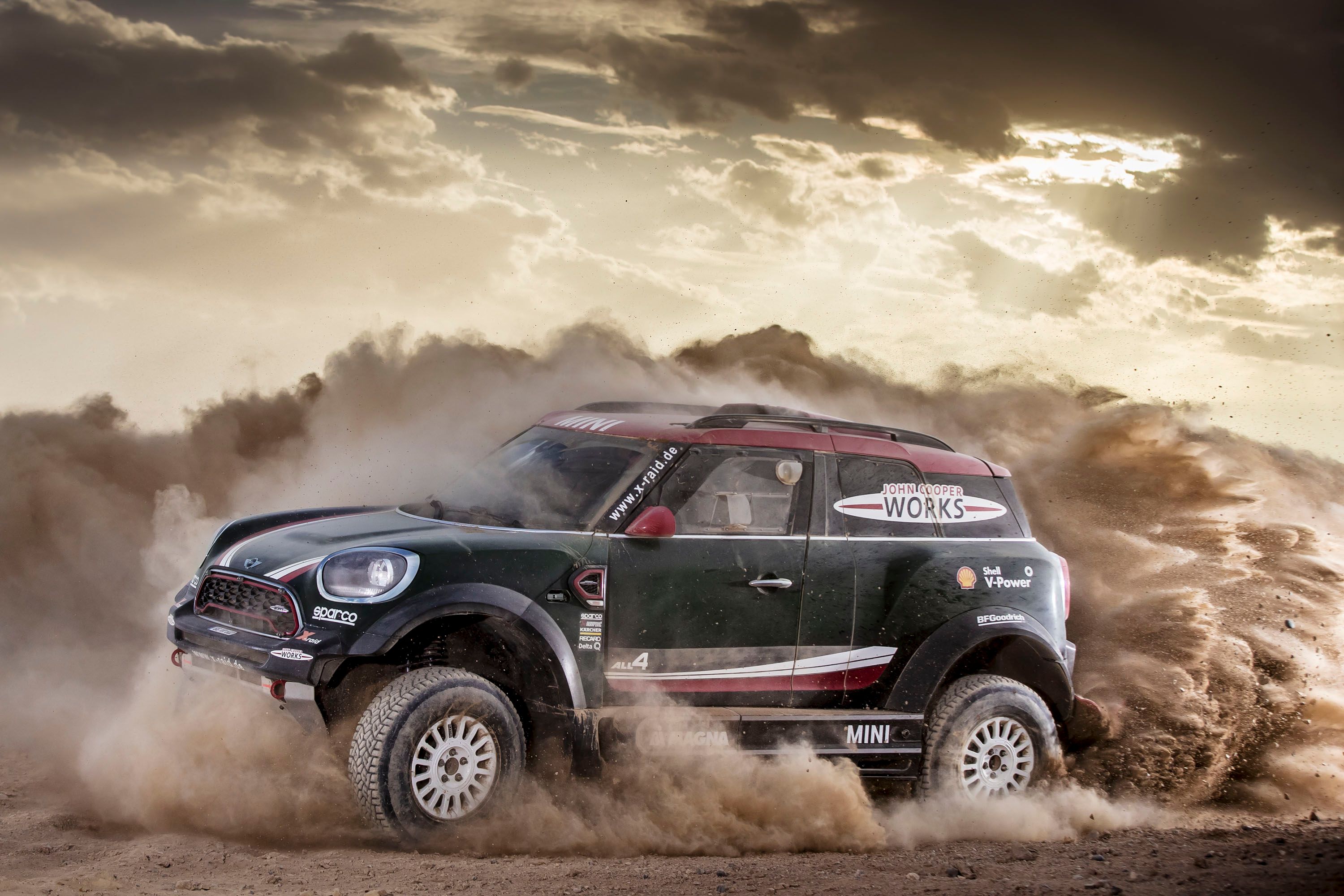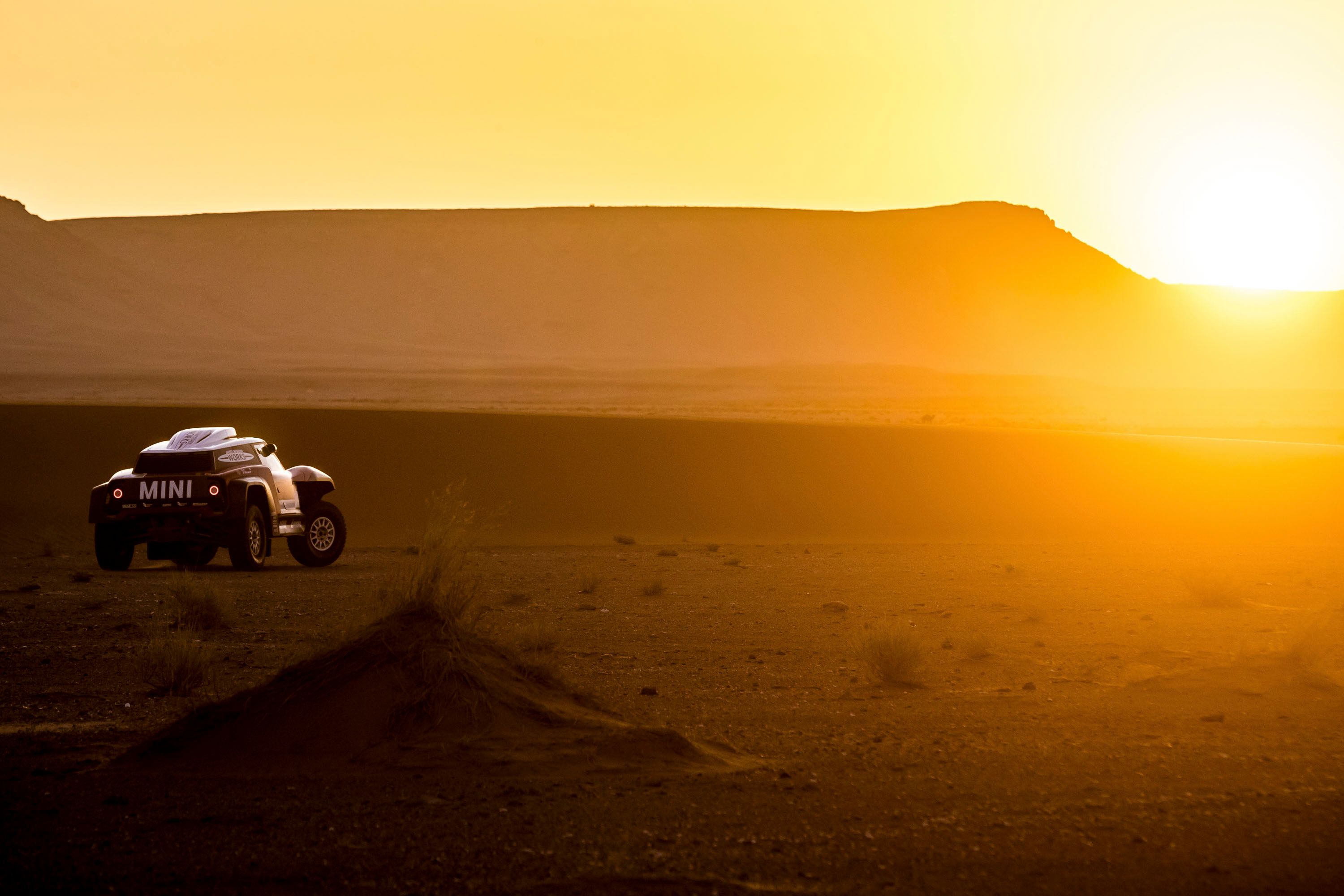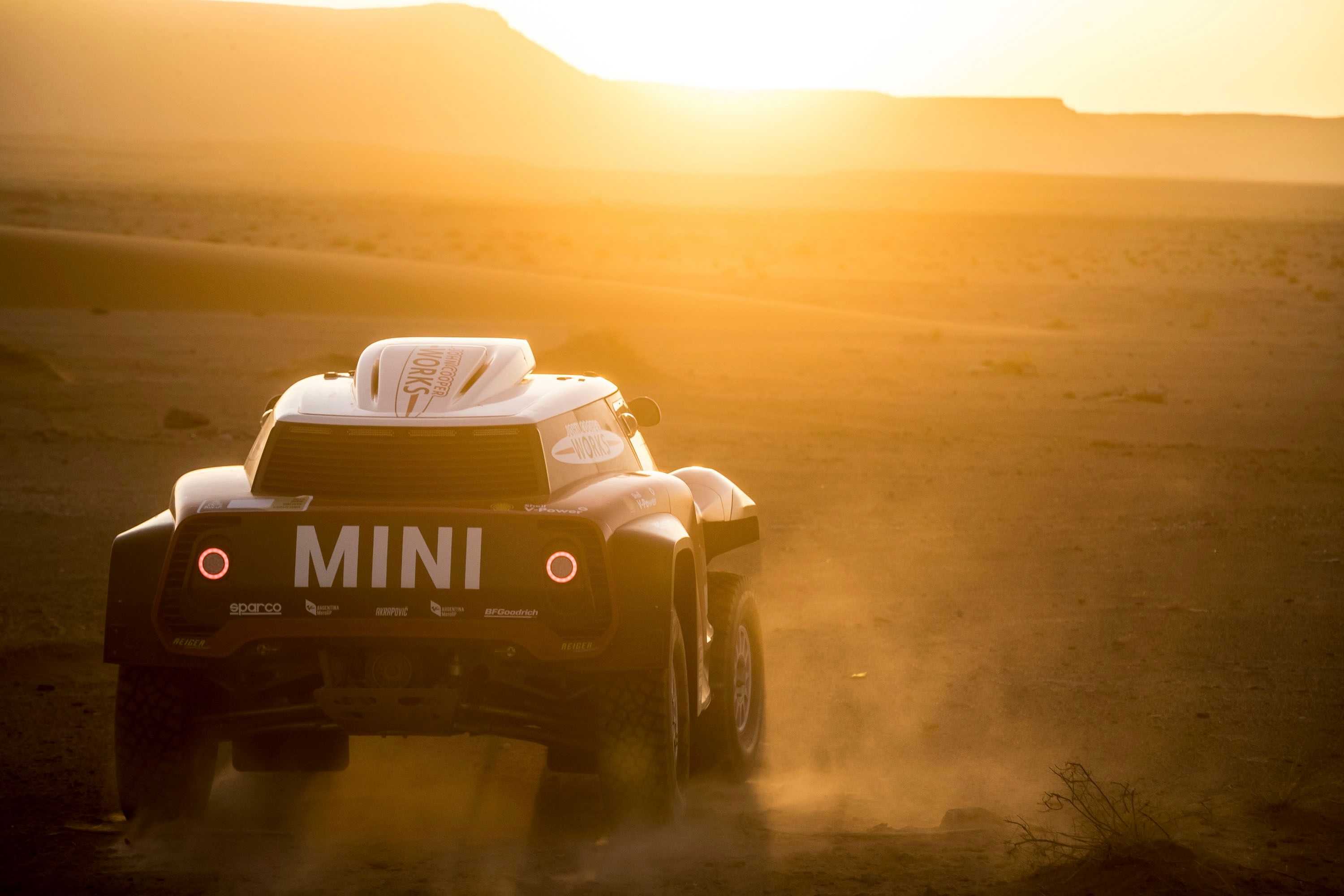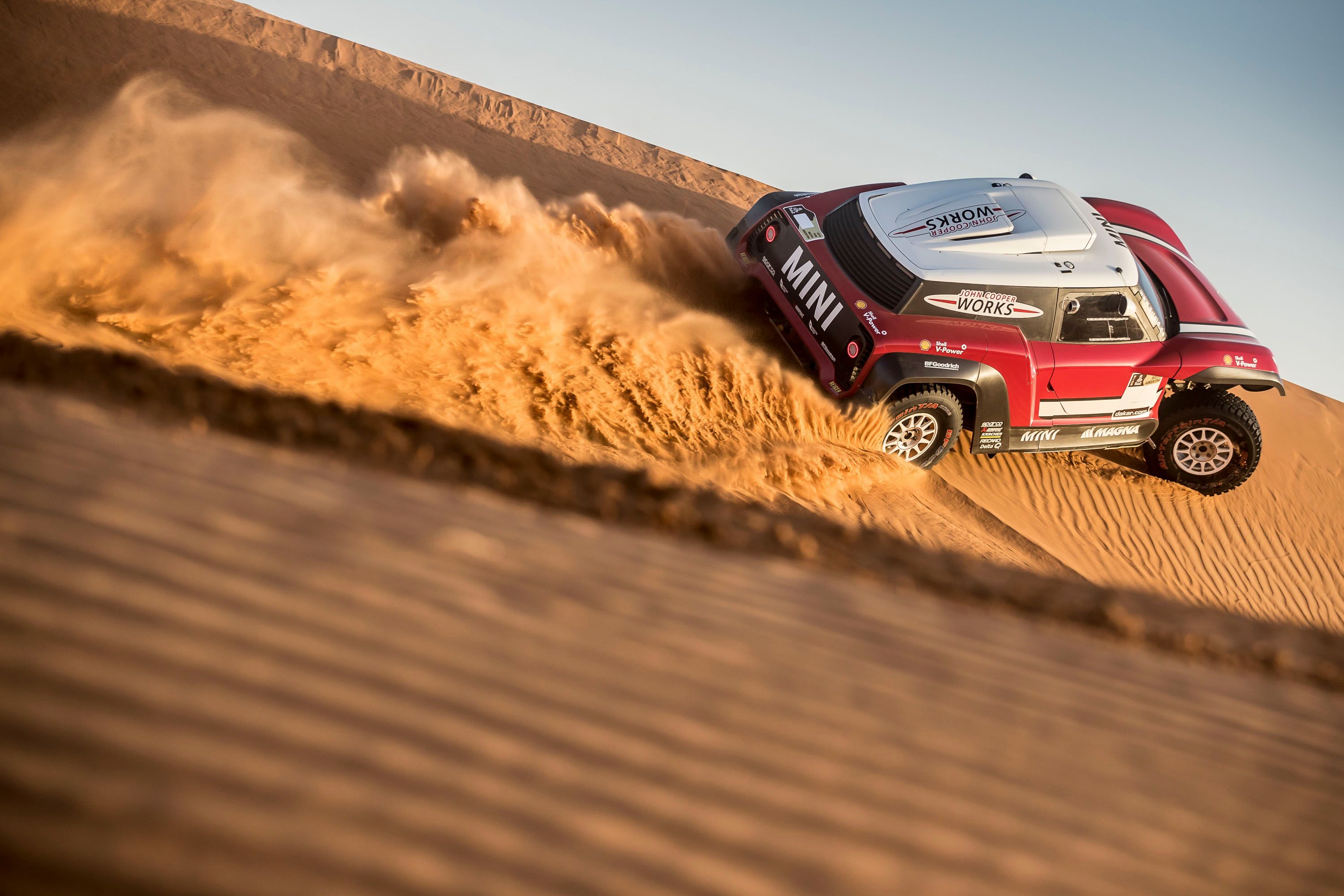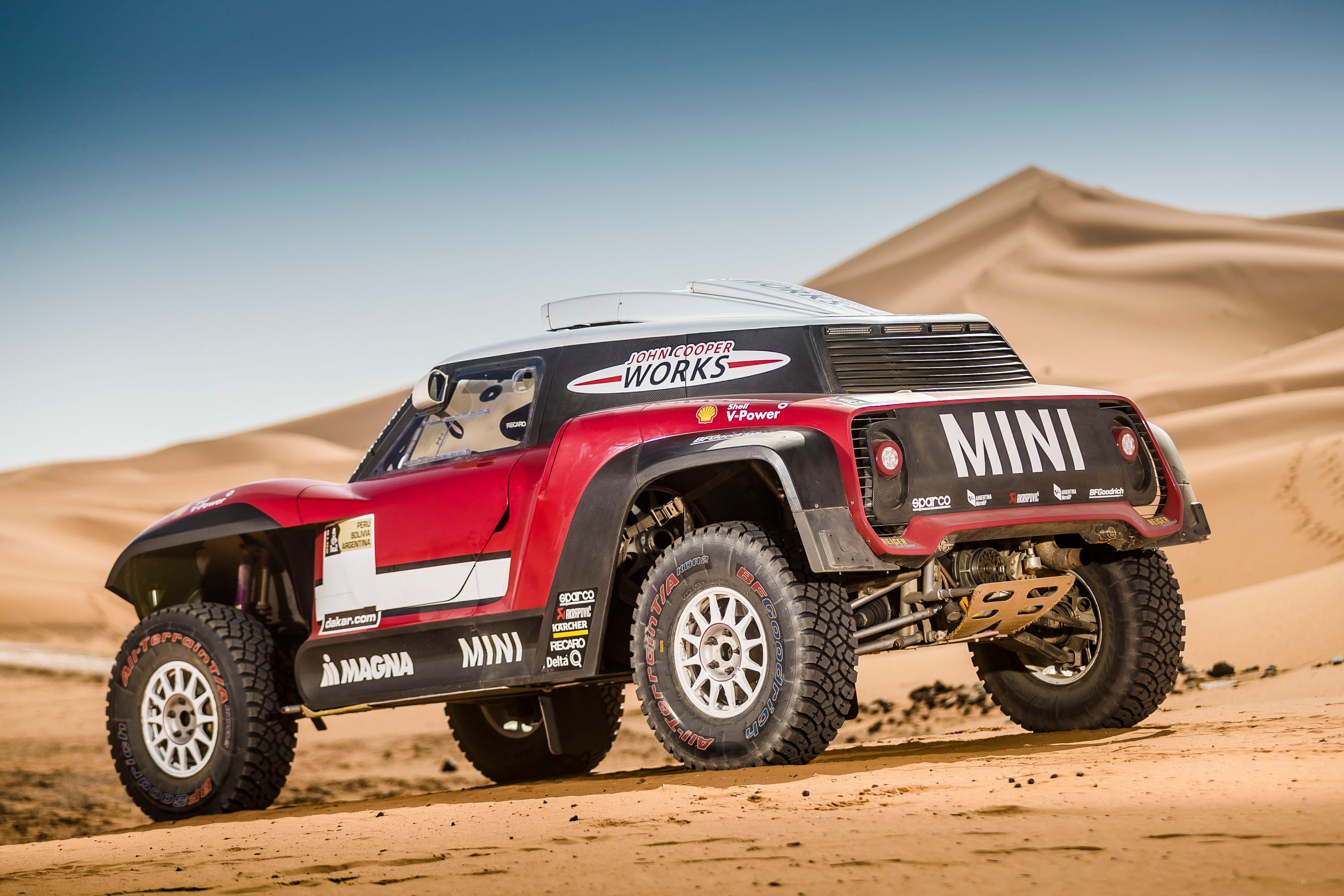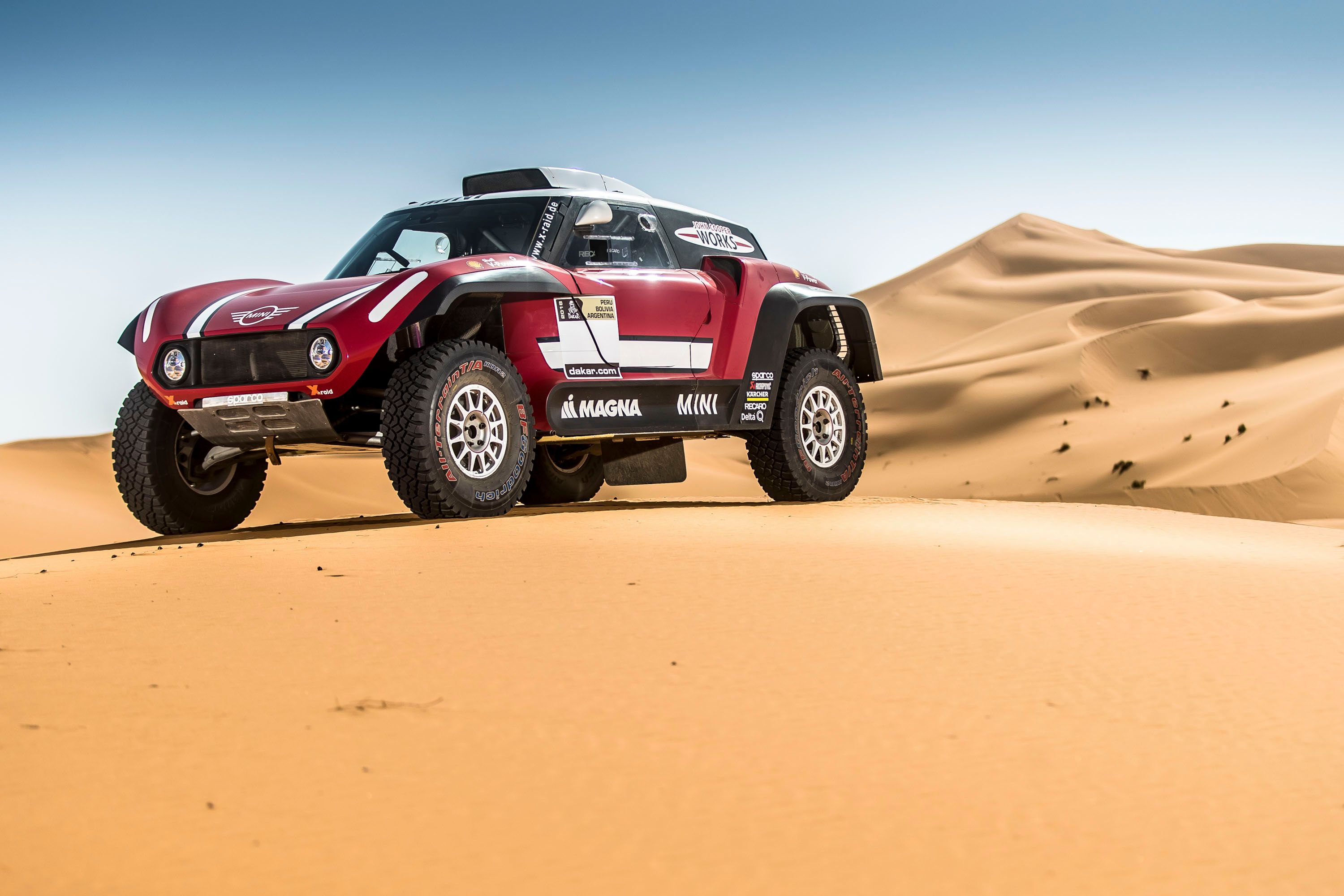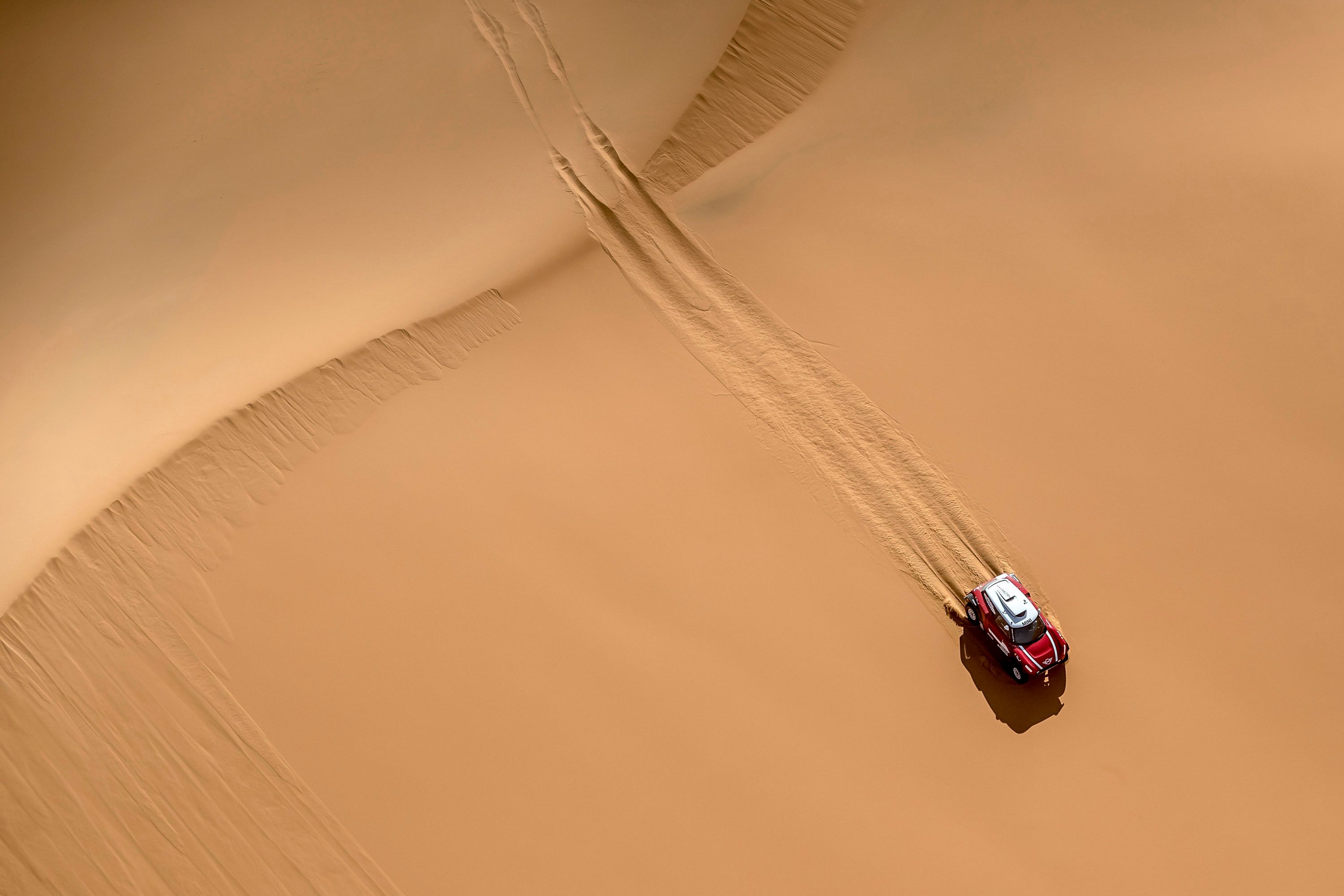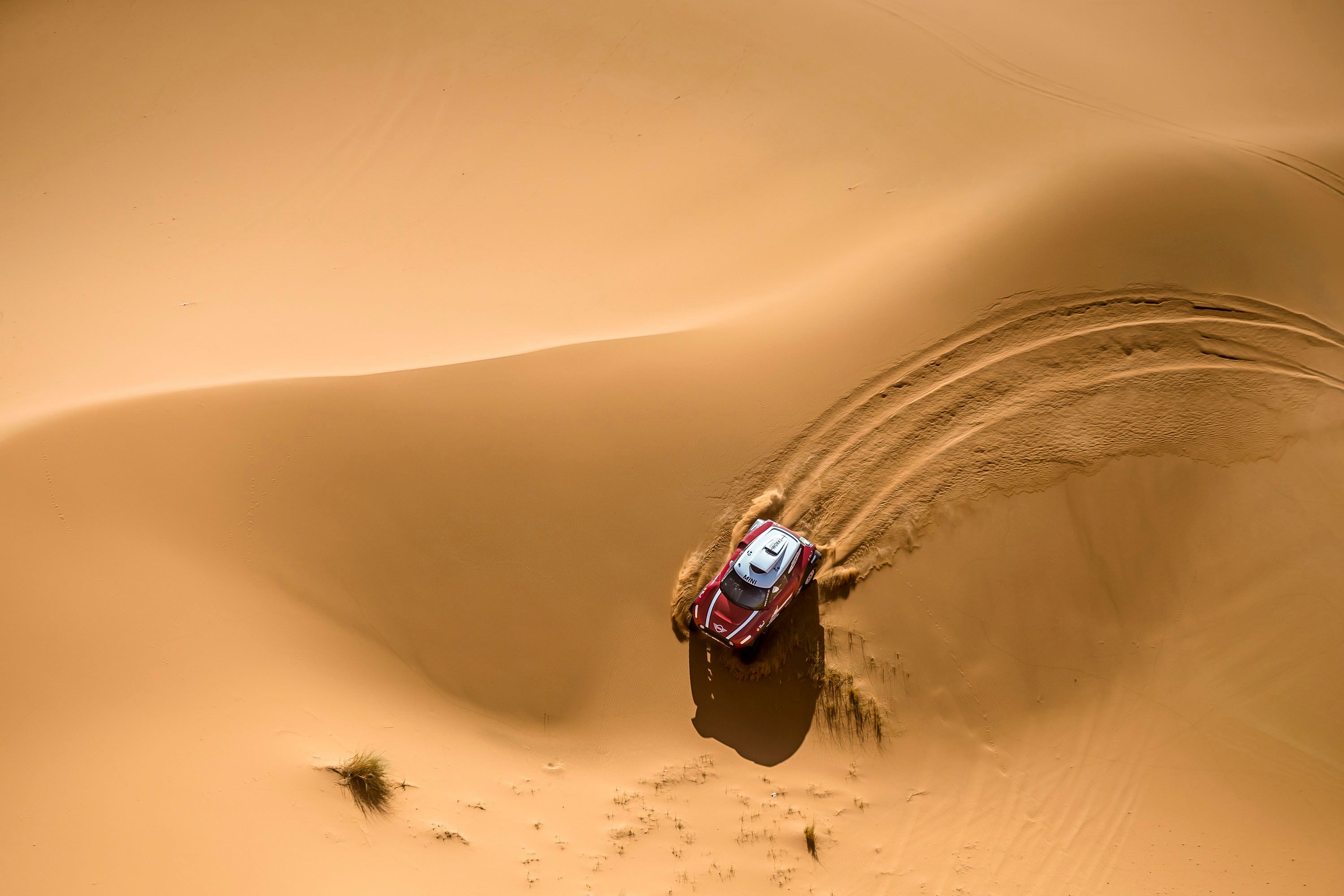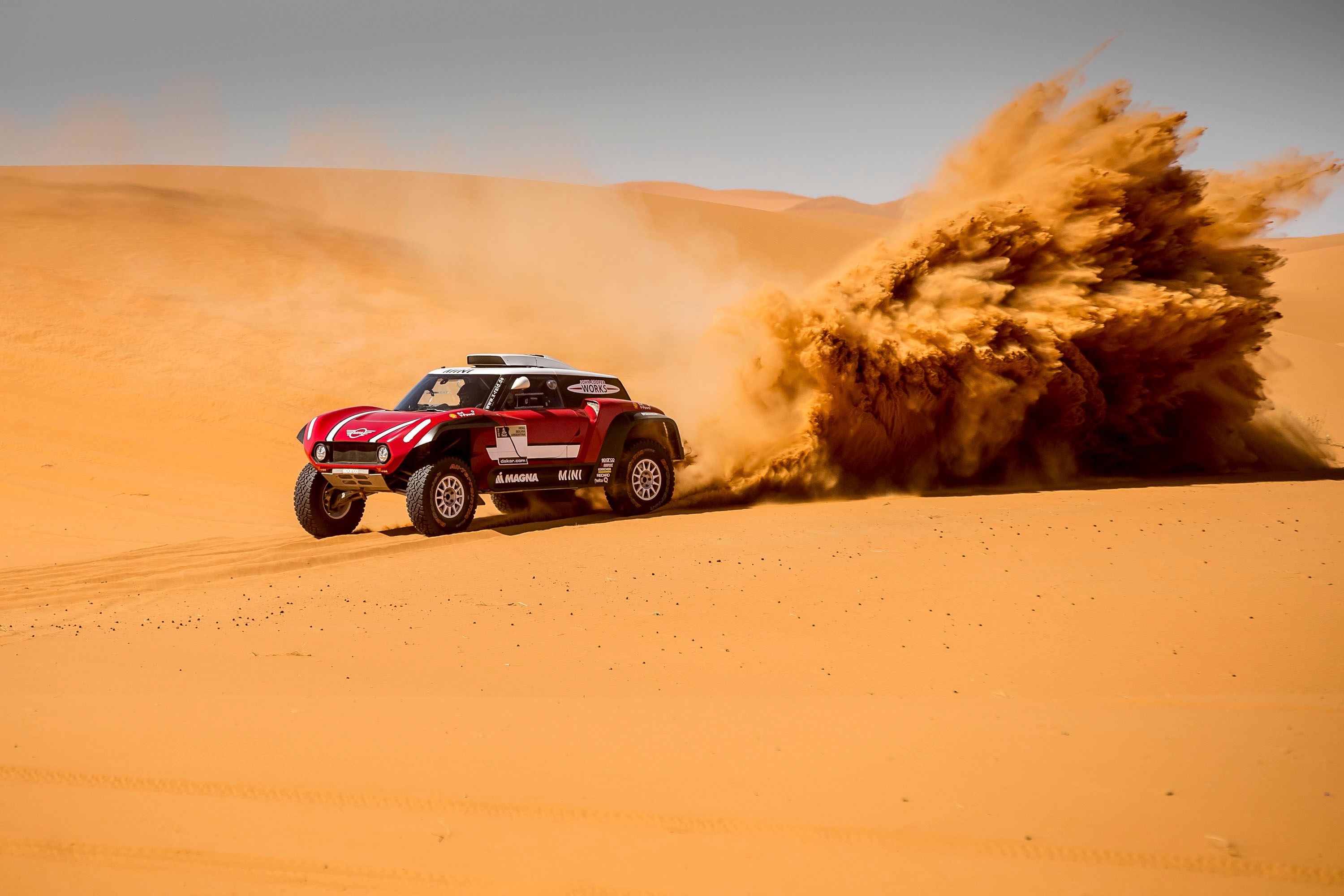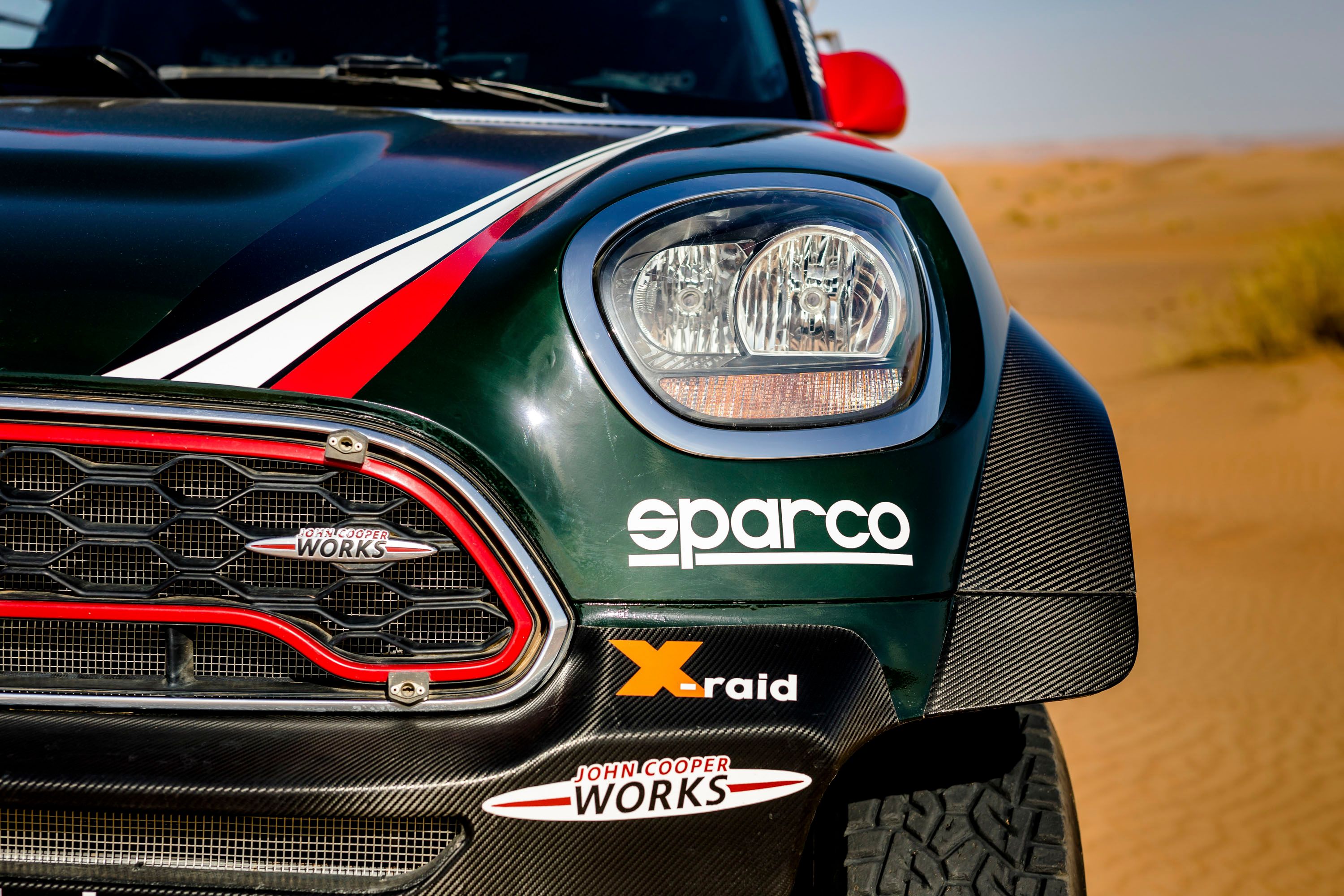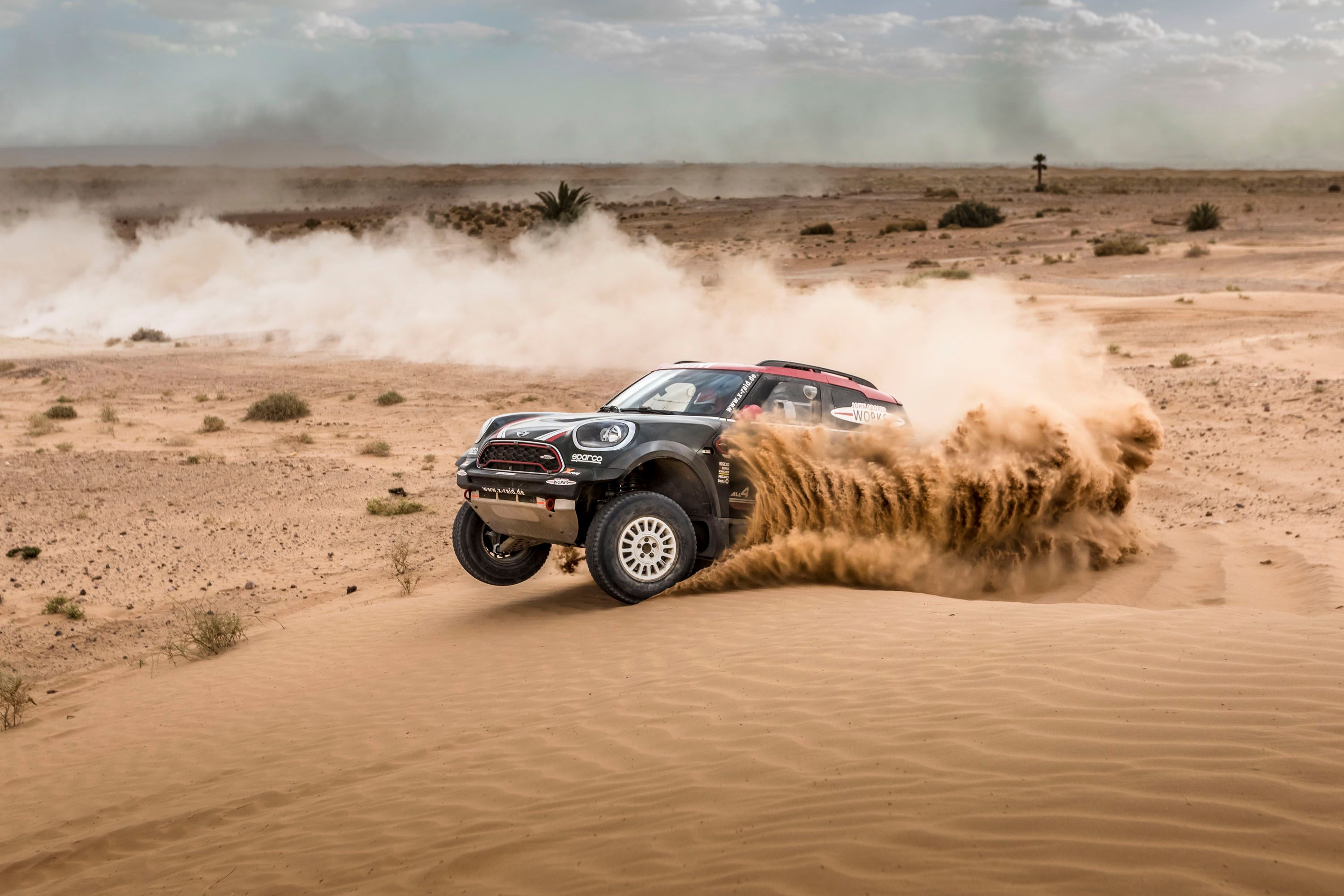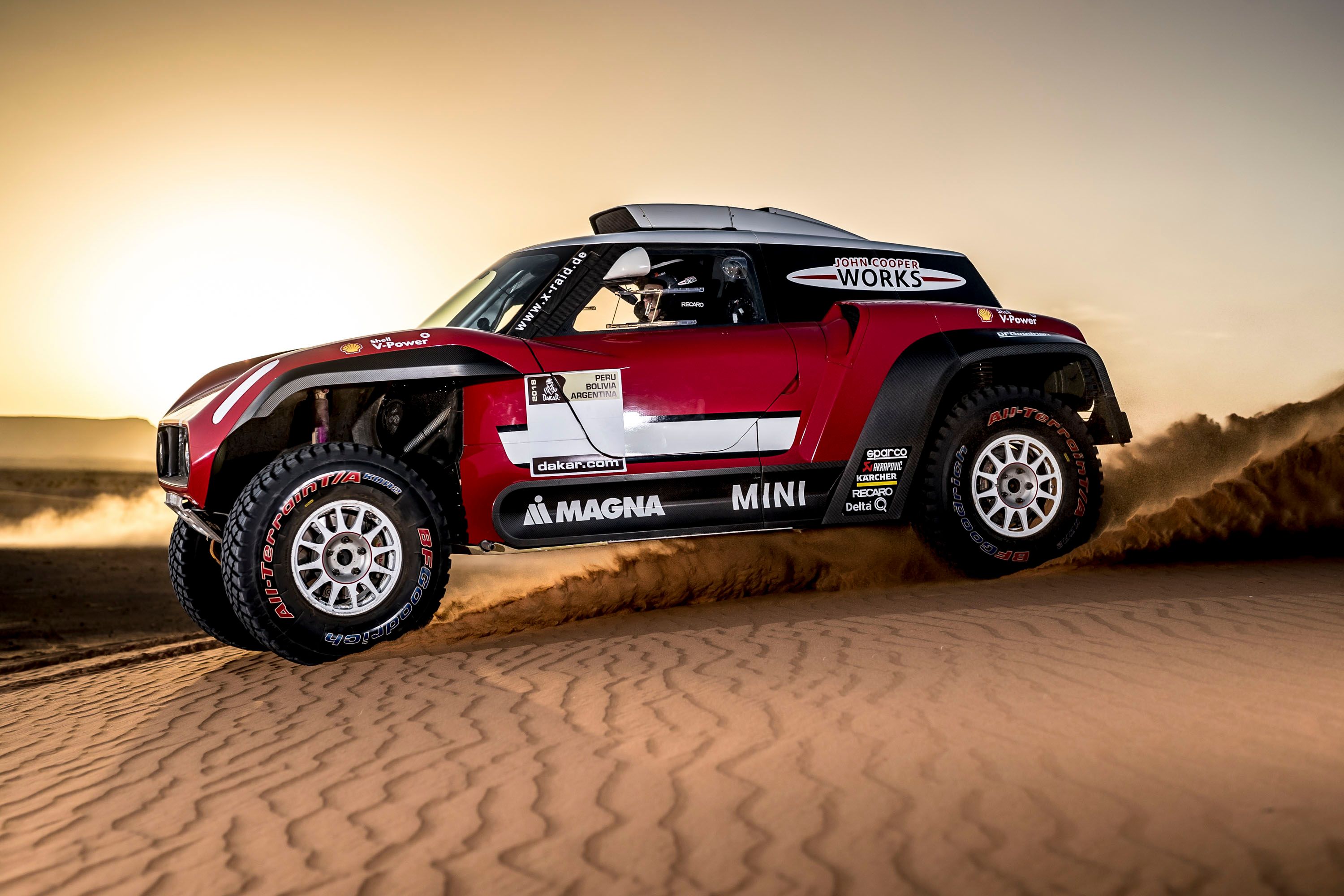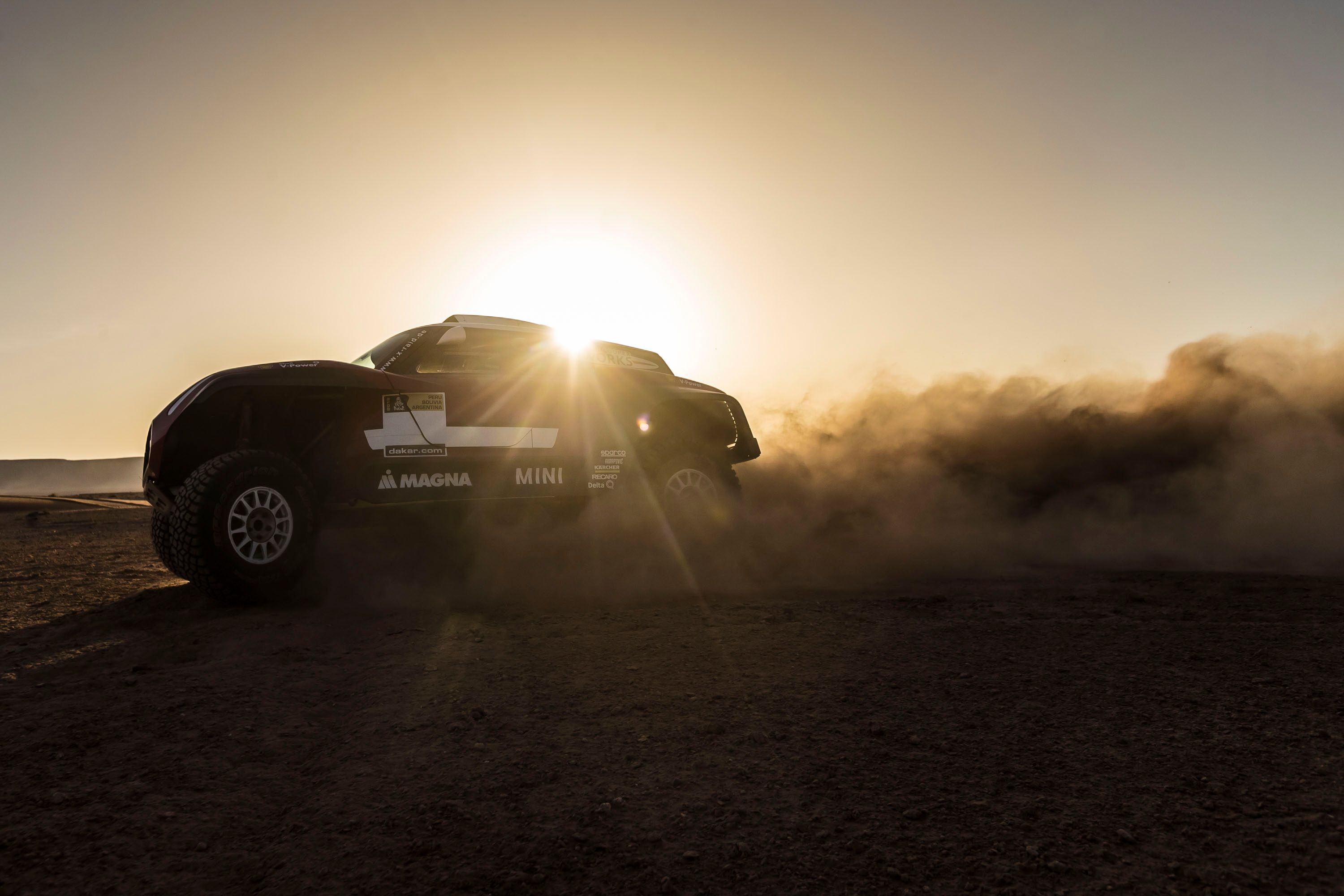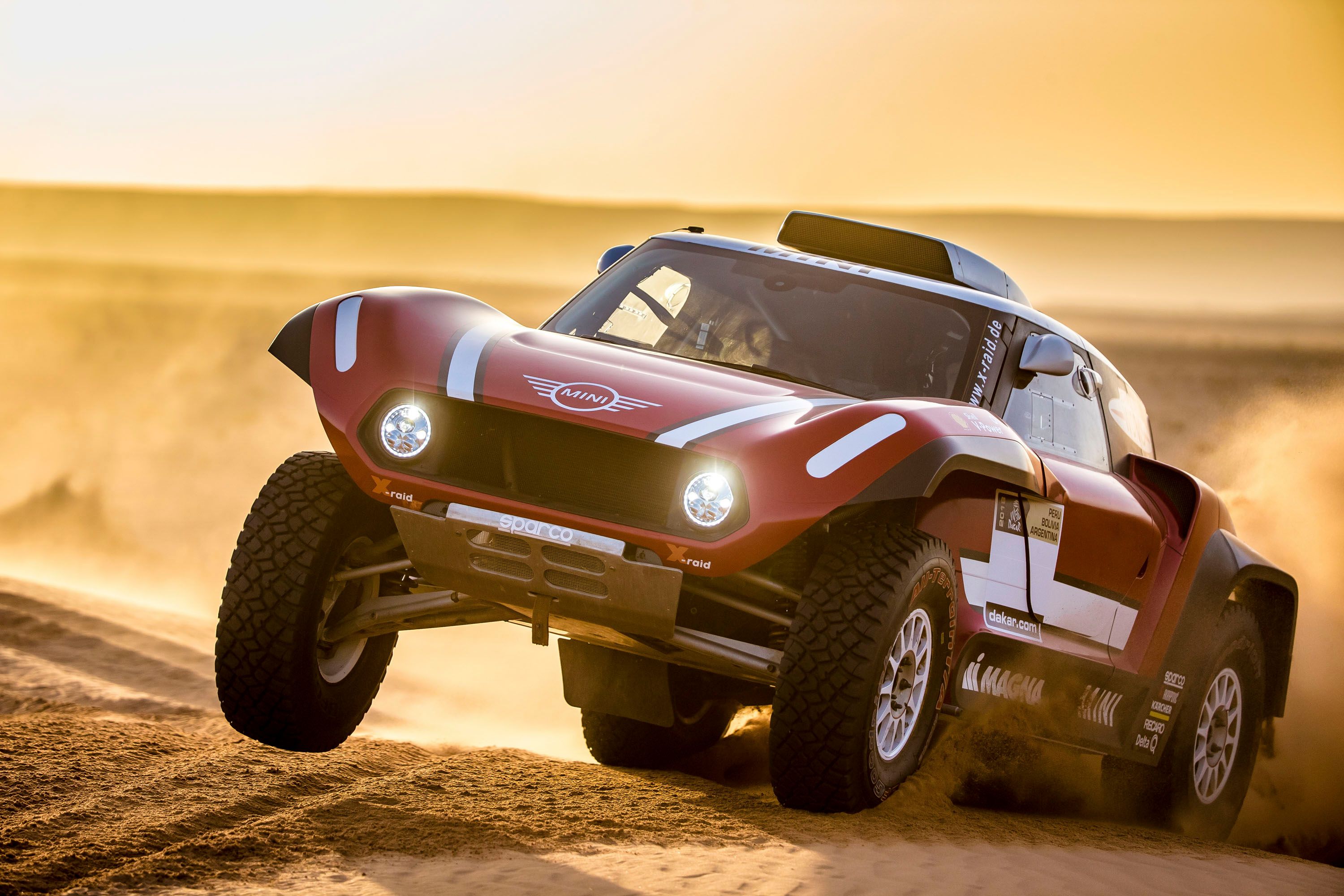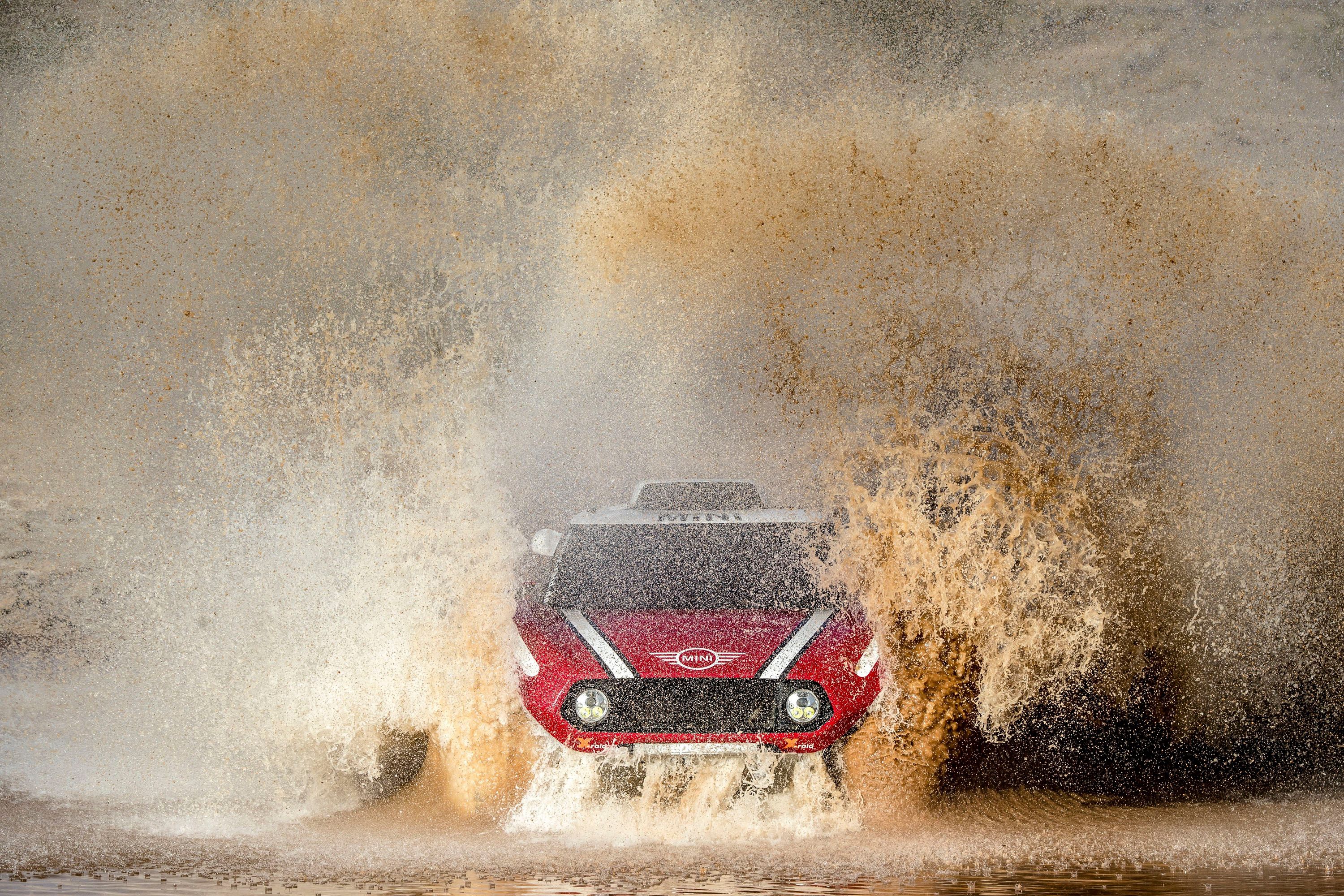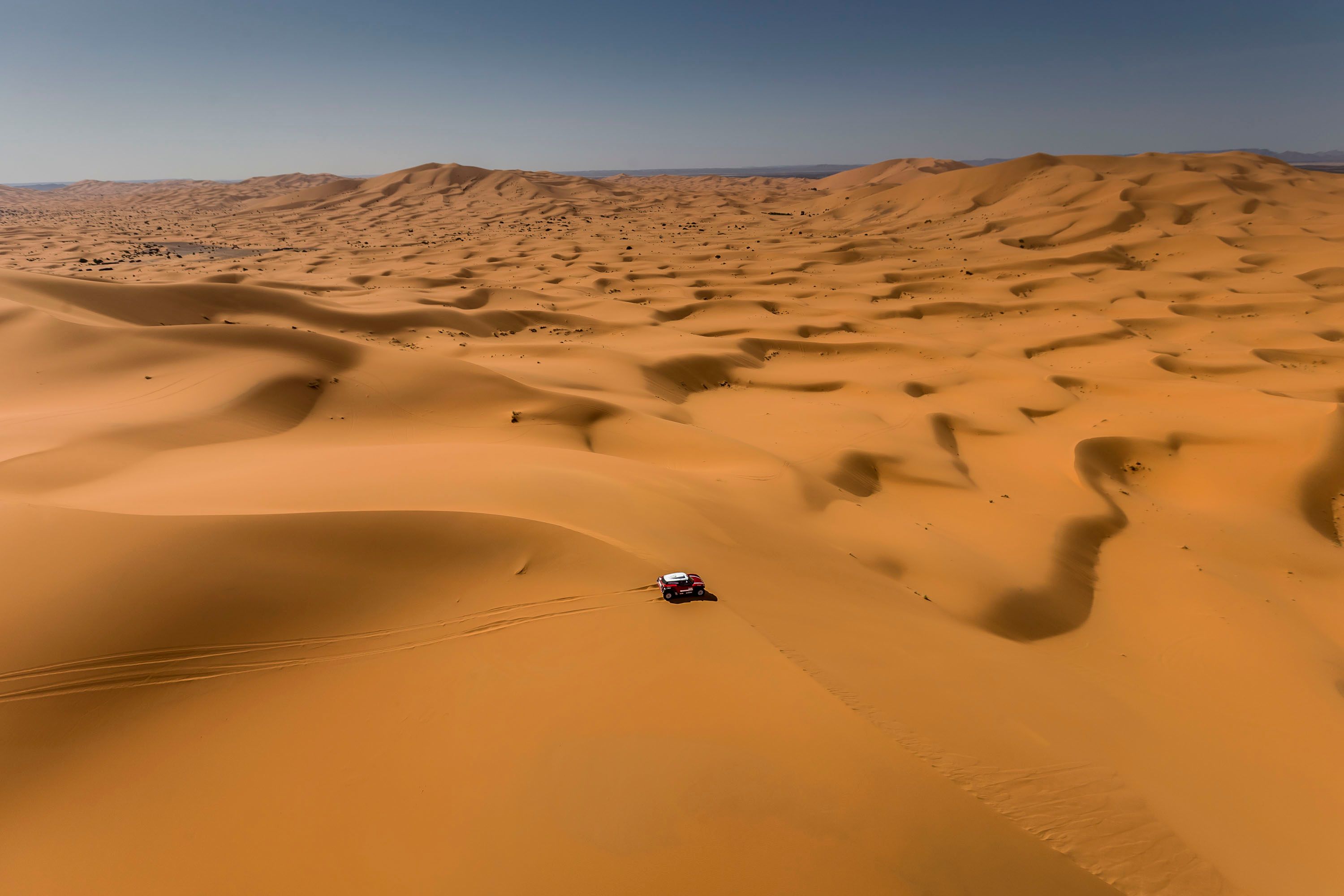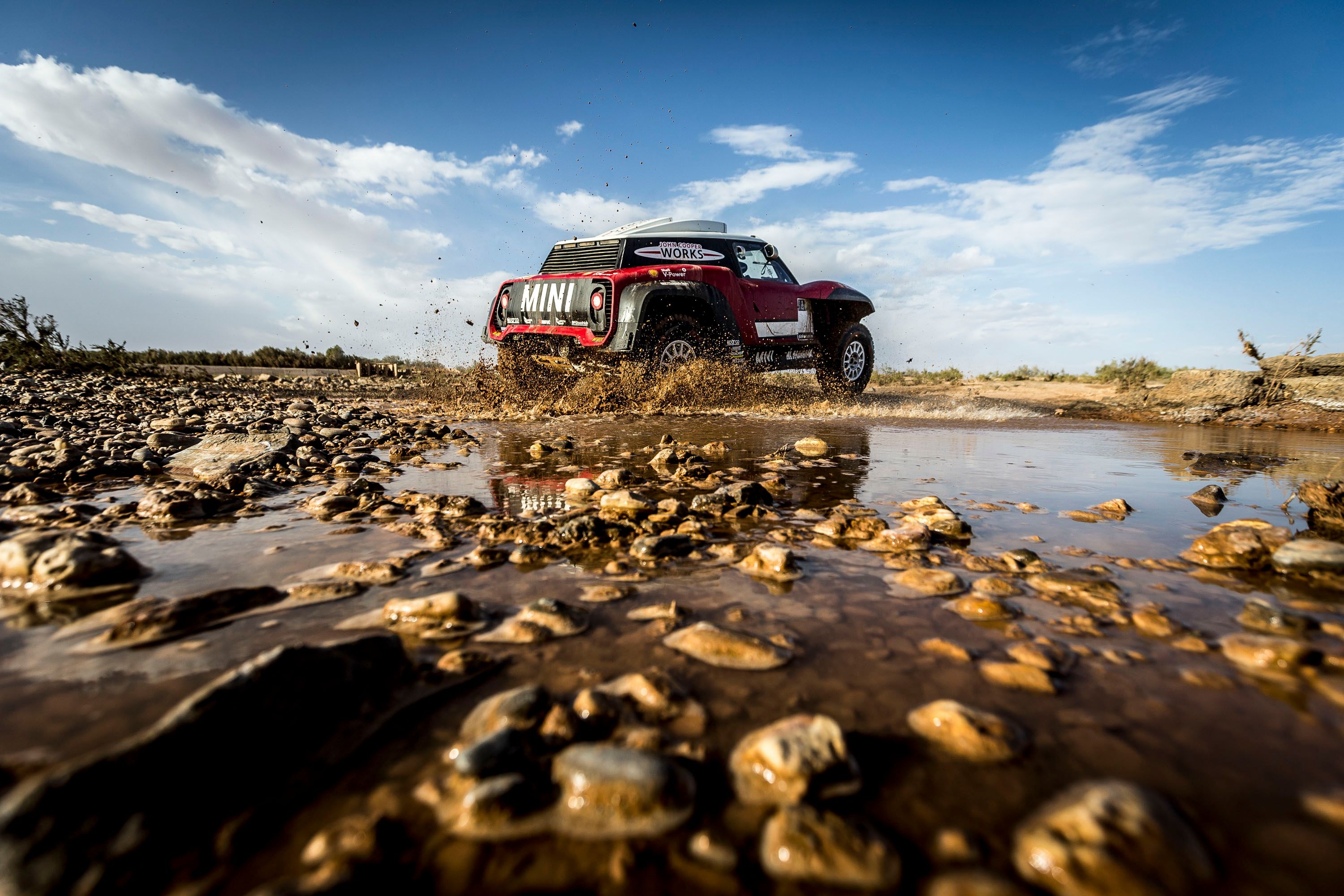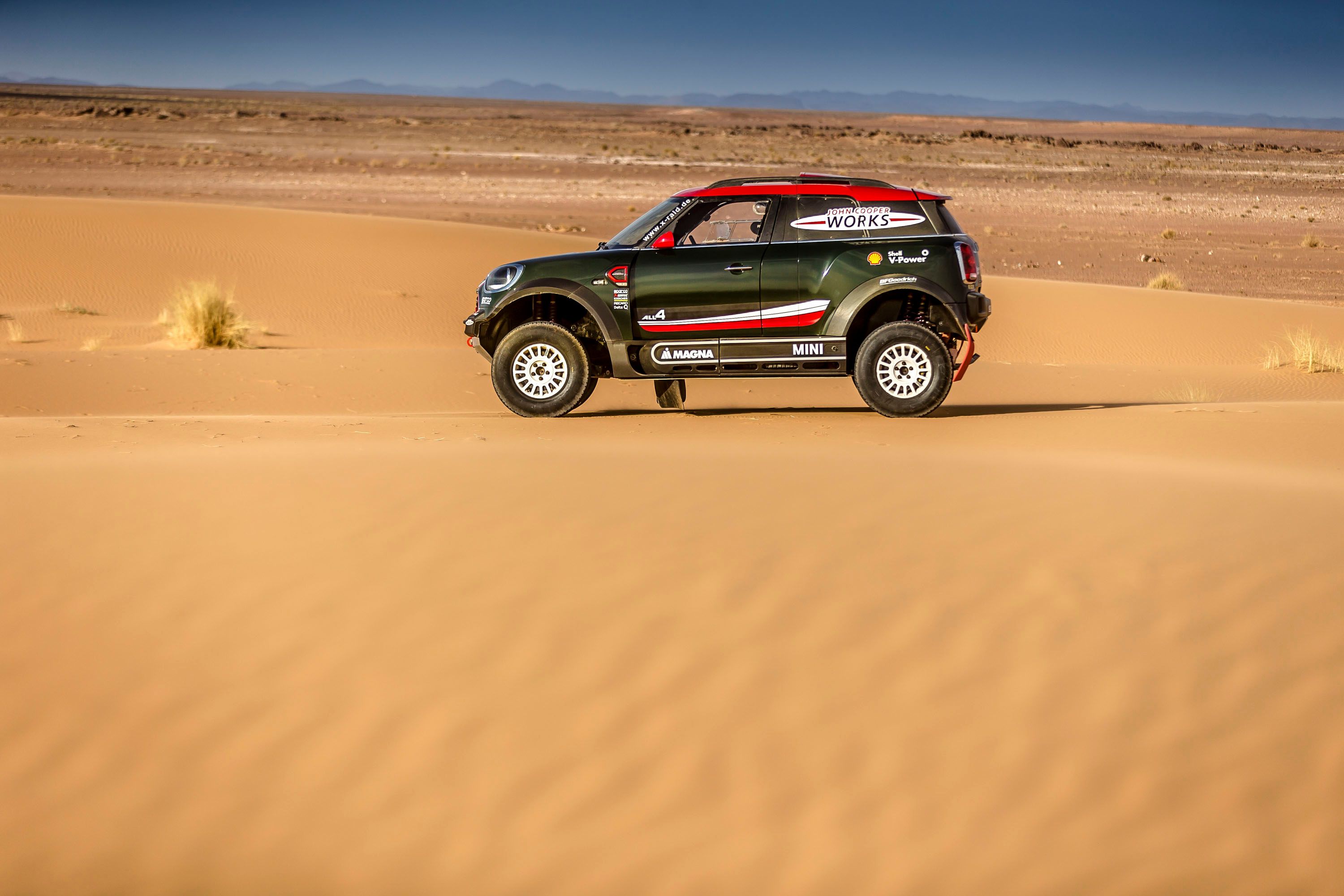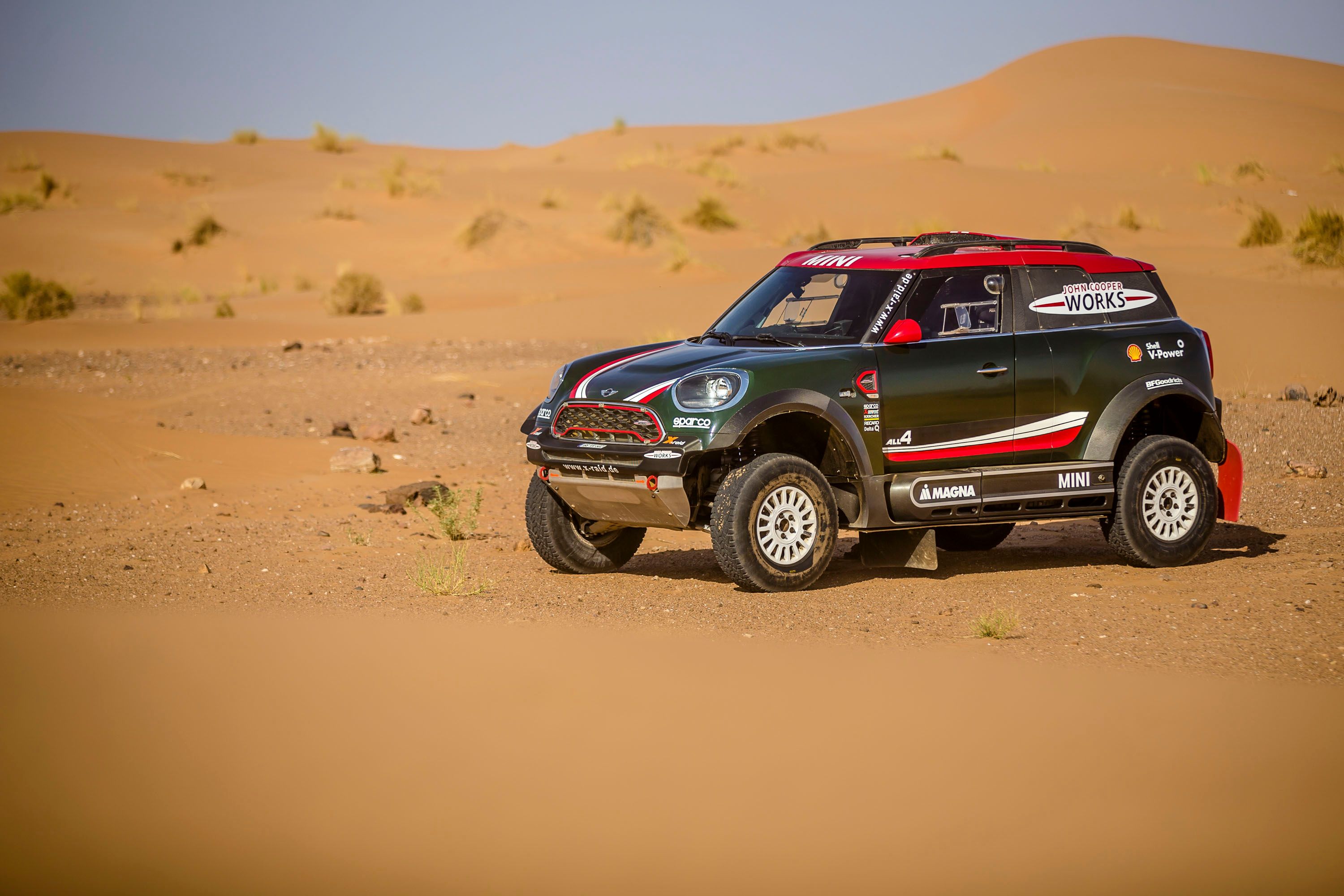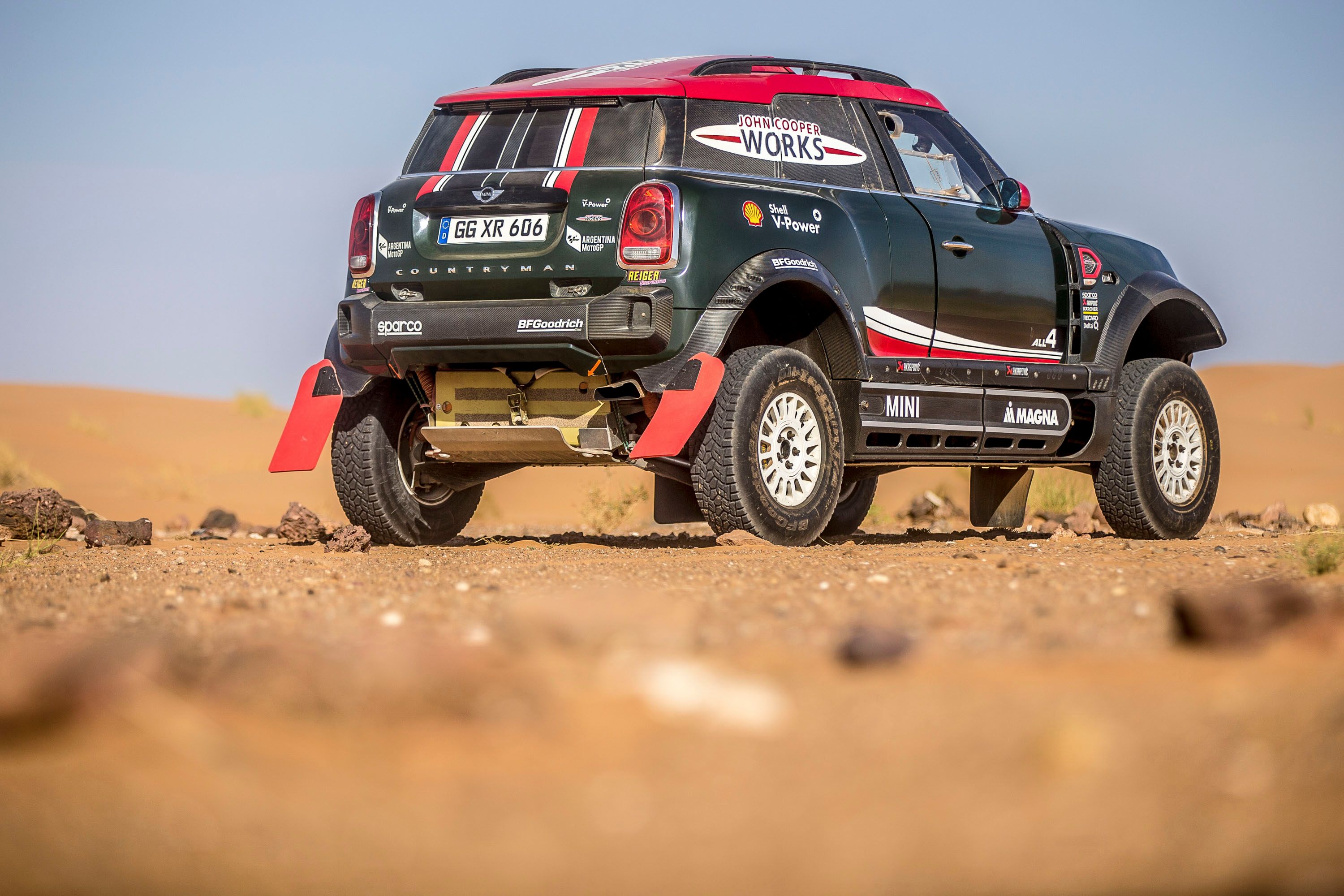As is tradition, the world of motor sport is looking to kick off 2018 with the infamous Dakar Rally, one of the most brutal, unforgiving, car-breaking, will-sapping events ever conceived. The Dakar heads into its 40th running this year, and its tenth stint in South America after the move across the Atlantic in 2009, and once again, competitors will do battle over a variety of terrain, from sand, to tarmac, to boulder fields, to 13,000-foot mountain passes. With so much tough terrain and such insane distances to cover, simply completing the Dakar is considered a major accomplishment. However, X-raid and Mini aren’t looking to just reach the finish line - they wanna win. Thus far, the collaborative effort has yielded four consecutive victories between 2012 and 2015, with the most recent outing in 2017 snagging sixth overall thanks to the efforts of Argentinian driver Orlando Terranova. Now, X-raid and Mini are gearing up for a fresh approach that includes the brand-new RWD Mini John Cooper Works Buggy. Created to take advantage of certain regulations to bolster 2WD competition, the Buggy will race alongside the more traditional Countryman-based 4WD Mini John Cooper Works Rally for a two-pronged approach to tackling the Dakar.
Fittingly, both vehicles were presented in Paris prior to their competition debut. The Buggy is a particularly exciting new venture for the Germany-based X-raid, which for the past 15 years has focused primarily on 4WD competition vehicles. However, with an experienced roster of drivers ready to take the controls, plus the proven Mini Rally to bolster the ranks, the team is feeling good about its chances. Read on for details on what makes these machines tick.
Continue reading to learn more about the Mini John Cooper Works Rally.
2018 Mini John Cooper Works Rally And Buggy
- Make: Array
- Model: 2018 Mini John Cooper Works Rally And Buggy
- Engine/Motor: inline-6
- Horsepower: 340 @ 3250
- Torque: 590 @ 1850
- Transmission: Sadev six-speed
- [do not use] Vehicle Model: Array
Exterior
While both the Countryman-based Mini Rally and the 2WD Mini Buggy employ body panels constructed from carbon fiber reinforced plastic and kevlar (to help save weight), the Buggy is unique in its aesthetic. The bespoke exterior looks tough and ready for competition, with ultra-high fenders, a plethora of intakes and scoops, and loads of underbody protection as well. Several outside sources assisted in the creation of the Buggy's exterior, all of which collaborated to make sure it was “aerodynamically optimized” and could easily cut through the atmosphere at speed. “The aero package was of major importance and was enhanced together with KLK in many simulations,” said X-raid Team Manager Sven Quandt. “The final looks of the vehicle were created in cooperation with Mini Design.
Meanwhile, the Countryman-based 4WD Mini Rally looks a little closer to something you might buy in a showroom, albeit with innumerable enhancements under (and over) the skin. While the overall shape of the Mini Rally is similar to the street-friendly sub-compact crossover, it too gets impossibly flared fenders, tons of extra ground clearance, an extra intake on the roof, tough underbody protection, and a few sponsorship stickers as well.
Cute these Minis are not.
Finally, there are 17-inch diameter wheels on the Buggy and 16-inch wheels on the Countryman-based Rally.
Exterior Dimensions
|
Mini John Cooper Works Buggy |
Mini John Cooper Works Rally |
|
|
Length |
4,332 mm (170.6 inches) |
4,350 mm (171.3 inches) |
|
Width |
2,200 mm (86.6 inches) |
1,999 mm (78.7 inches) |
|
Height |
1,935 mm (76.2 inches) |
2,000 mm (78.7 inches) |
|
Wheelbase |
3,100 mm (122 inches) |
2,900 mm (114.2 inches) |
|
Track Width |
1,855 mm (73 inches) |
1,736 mm (68.3 inches) |
Interior
Note: Mini All4 Racing pictured here.
While we didn't get a full rundown on the interior spec for these machines, there are a few things to mention right off the bat. First off, both will get utterly stripped-down cockpits, with bucket racing seats and multi-point racing harnesses to keep driver and co-pilot in place while rocketing through the scenery. Various vents and intakes will help to keep 'em cool while on the move, including via small sliding ports in the lexan windows. Digital instrumentation will help the pilots keep tabs on the vitals.
If something does happen to go boom (and considering this is the Dakar, that's definitely a distinct possibility), the racers come equipped with a plethora of tools and spare parts. If called upon, the pilots can set up a little impromptu workshop out in the field to quickly get them back up and running.
Drivetrain
The beating heart for both the Buggy and the Mini Rally is a turbocharged 3.0-liter inline six-cylinder diesel powerplant. Developed with input from BMW Steyr, both oil burners produce peak output figures of 340 horsepower at 3,250 rpm and 800 Nm (590 pound-feet) of torque at 1,850 rpm. Regulations dictate that the engines must suck the atmosphere through a 38 mm (1.5-inch) restrictor, otherwise you can bet these lumps would be making a helluva lot more power. Top speed is clocked at 190 km/h (118 mph), which might not seem very high at first glance. That is, until you realize the sort of terrain its over.
Although the engine utilizes BMW-bred turbocharging technology, the transmission and drivetrain are both newly developed for the racing application. And even with the Buggy using RWD and the Mini Rally using 4WD, the drivetrains for both are quite similar in terms of which performance company makes which components. Both racers utilize a six-speed gearbox from Sadev, a high-performance clutch from AP Racing, and a differential from Xtrac. Both also have a 325-liter (85.9-gallon) fuel capacity.
Mini John Cooper Works Rally And Buggy Engine And Performance Specs
|
Engine |
turbocharged 3.0-liter inline six-cylinder diesel |
|
Drive Type |
RWD (Buggy), 4WD (Rally) |
|
Horsepower |
340 HP @ 3,250 RPM |
|
Torque |
590 LB-FT @ 1,850 RPM |
|
Transmission |
Sadev six-speed |
|
Clutch |
AP Racing |
|
Differential |
Xtrac |
|
Top Speed |
118 mph |
Chassis And Handling
Under those composite body panels, you'll find the Buggy and Mini Rally get a specially designed tubular steel frame. Basically, these are custom-built racers with almost nothing in common with Mini's production line, but hey – this is the Dakar. Any and all advantages you can get are well worth the investment.
This time around, the Mini John Cooper Works Rally gets a refresh for its chassis, offering up more suspension travel and further weight reduction compared to the outgoing iteration. The suspension travel was increased from 250 mm (9.8 inches) to 280 mm (11 inches), making for a massive amount of leeway when bashing through harsh terrain. Meanwhile, the Mini Rally's weight was reduced from 1,952 kg (4,303 pounds) to 1,850 kg (4,079 pounds), a significant savings in the world of top-shelf motorsport competition.
“We succeeded in achieving the new minimum weight,” said Team Manager Quandt. “We looked at absolutely every component. As a result, the thickness of the carbon fiber body and the weight of the frame were reduced. We also checked all screws what helped us to save another three to four kilograms. This demonstrates that reducing the car’s weight really was an in-depth effort.”
All those weight saving efforts benefited the Buggy as well, and thanks to the lack of extra driven wheels, the rear-wheeler weighs just 1,700 kg (3,748 pounds) when empty. Of course, that 150-kg weight loss is the trade off for reducing traction by half.
To haul down the Buggy, the RWD machine gets Brembo brake discs measured at 355 mm (14 inches) by 32 mm (1.3 inches). There are also two spare wheels in case of punctures, with the rubber coming from BF Goodrich and measuring in at 37 inches tall and 12.5 inches wide.
Meanwhile, the Works Rally gets AP disc brakes measured at 320 mm (12.6 inches) by 32 mm (1.3 inches), with ventilated air cooling in front and water-chilled cooling in the rear. To stave off the DNFs, the Rally gets three spare wheels, with BF Goodrich once again supplying the rubber, this time measuring in at 245/80.
Competition
Peugeot 2008 DKR Maxi
Like the Mini, the Peugeot 2008 is based on a street machine, and also like the Mini, this Dakar champion has very little in common with the production variant. Without a doubt, Peugeot is Mini's chief rival, having lost the last two Dakars to the French automaker. This year, the Peugeot Total team is going for its third consecutive win, and the 2008 DKR is looking as mean as it's ever been. And with Peugeot boasting a roster that includes rally legends like Sebastien Loeb and Carlos Sainz, Mini definitely has its work cut out for it.
Read our full review on the Peugeot 2008 DKR Maxi.
Conclusion
While the Mini Rally is certainly impressive, it's the Buggy that really piques our interest. While the larger SUV has seen the field of battle, the Buggy is still green, as construction only got underway this past February. That's not a lot of time to develop a world-beating racer, but the X-raid team poured a lot into the project in such a short period.
“This has been the biggest project in our company’s history so far and we have worked extremely hard at it,” said X-raid Team Manager Sven Quandt. In total, more than 50 engineers from X-raid contributed to its creation, as did several other company partners, such as BMW Motorsport, Magna Steyr, Heggemann, CP Autosport, and Faster. “It was the very first buggy designed and built by us but we could benefit from our massive cross-country experience.”
Despite its fresh-start beginnings, the Mini John Cooper Works Buggy has performed quite well in testing thus far, with the team wringing it out on a variety of terrain, conducting sessions in locales like Hungary and Morocco. “During this time the Buggy never had to stop once due to a technical problem, which is really quite remarkable,” said Team Manager Quandt. “Despite all the euphoria, we must definitely not forget the Mini John Cooper Works Rally. There are tracks and types of terrain where an all-wheel drive has advantages. What is more, our car is extremely reliable.”
This year, the Mini X-Raid Dakar effort includes no less than seven cars and a corresponding roster of drivers and co-drivers. There will be three new Mini John Cooper Works Buggies, with drivers including Mikko Hirvonen from Finland, Bryce Menzies from the U.S., and Yazeed Al-Rajhi from Saudi Arabia. Meanwhile, taking the helm of the remaining four Mini John Cooper Works Rally will be Argentina's Orlando Terranova, Poland's Jakub Przygonski, Spain’s Joan “Nani” Roma, and Chile’s Boris Garafulic.
“It’s our goal to make it onto the podium,” said Quandt. “No matter if the Mini John Cooper Works Buggy or the Mini John Cooper Works Rally makes it. There are many variables we can’t control, such as the routing, the weather and – of course – a little dose of luck, which is something you definitely need if you want to succeed in the Dakar.”
“With these two cars we have the most powerful Mini family that ever raced at the Dakar Rally,” said Mini Senior Vice President Sebastian Mackensen.
However – will it be enough to stop Peugeot from grabbing a third consecutive win?
The opening stage of the Dakar is set to take place on January 6th in Lima, Peru, with the final stage set for completion by January 20th in Cordoba, Argentina.
References
Read our full review on the 2017 Mini Countryman.
Read our full review on the 2018 Mini Countryman JCW.
Read our full review on the 2015 Mini ALL4 Racing.

